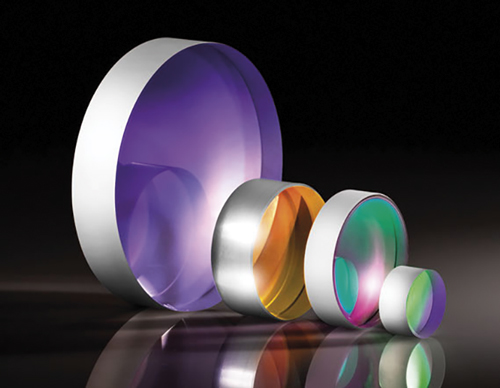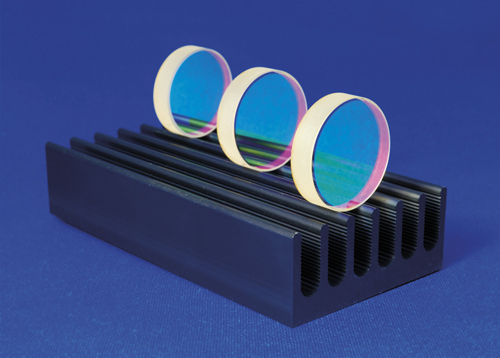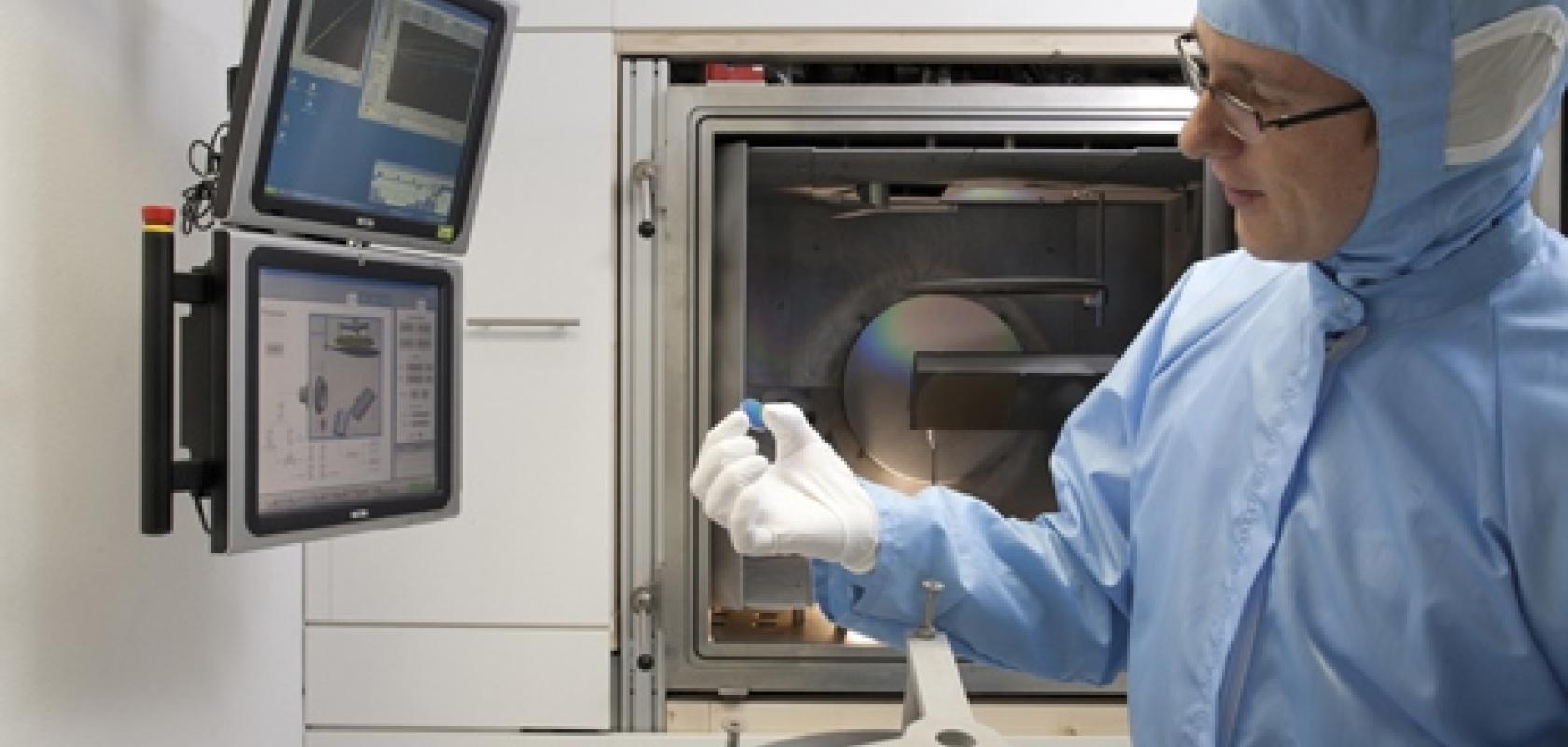Optical mirrors are used in a range of industries, such as astronomy, life sciences, metrology, semiconductor and solar. Demand for these components in these markets is steadily increasing, as Patrick Sasso, product line engineer at Edmund Optics, explained. ‘The markets for optical mirrors are demanding products faster,’ he said. ‘Customers want exactly the mirror that they need, which seemingly fits a very customised solution phase, and they want it right away. We call it the Amazon effect.’
Looking at the mirrors in terms of functionality, customer demand is also driving development, with high reflectivity a popular request. Sasso continued: ‘Customers are asking for reflectivities of 99.999 (recurring). It becomes an issue with, not even can we manufacture it, but can we measure it? Do we have the metrology capabilities to actually go ahead and measure something that highly reflective? Some new technologies have been coming out, including our cavity ringdown system. That gives us the ability to measure reflectivities to those kinds of extremes and higher. We are excited to start understanding how we can generate products to sell to customers that utilise that technology.’
Sasso explained that for ultrafast laser mirrors, the key objective is to keep making pulses faster. Tony Karam, laser optics project manager at the company is key to that goal.
‘Ultrafast lasers are growing,’ he said, ‘that’s why they’ve been out there for a couple of decades, but mainly been focused on research labs and academic or university labs. This type of mirror is very advantageous for pulse compression, anything below 30 femtoseconds and this mirror works great.’
Now, however, said Karam, these mirrors are being used more frequently in industrial settings. ‘That creates a lot of opportunities for smaller companies and smaller start-ups to invest and start working on ultra-fast laser technology,’ he explained.
Ultrafast mirrors 'a custom option'
Historically, ultrafast mirrors have not been a standard product but a custom option, and dedicating an entire coating run can be very costly. ‘Sometimes that is not cost-effective for a lot of the smaller start-up companies,’ admitted Karam. ‘We can take these highly top of the line ultra-fast mirrors and provide them by a single piece in stock with same-day shipping. We see a lot of movement there – a start-up company, instead of having to invest in an entire coating run that costs tens of thousands of dollars, can buy two or six of them right off the shelf.’
Other new applications for ultra-fast laser mirrors, said Karam, include medical applications like ophthalmology, multi-photon microscopy and, more recently, micro machining. Karam continued: ‘Now, ultrafast lasers are being used in a variety of micromachining applications because they provide a lot of precise features with no more or less thermal defects during the micro-machining process, so this is one of the growing areas.’
Extreme ultraviolet (EUV) optics technology has seen a move into different wavelength areas for mirrors, as Gary Pajer, senior product line manager, explained: ‘The first developments through EUV were for fundamental science and the facilities were quite large. They got larger and larger, and today we have free-electron lasers and synchrotron solutions that are actually institutions in themselves. However, in the past 15 to 20 years these sources have got smaller and smaller and in the last 10 years, commercial companies have been trying to develop table-top turnkey EUV sources for research.’
When the facilities were larger, said Pajer, researchers were accustomed to waiting months for their parts and all the EUV optics were custom-made. ‘But, now that the research is moving to the labs,’ he said, ‘researchers are not quite so patient and would like to be able to buy their optics and everything they need off the shelf.’
One of the long-lead-time items that slows people down, according to Pajer, is the EUV optic – and Edmund has noted a move into a new wavelength, with 13.5nm. ‘This is way outside the range of wavelengths that Edmund traditionally works in,’ he said.
‘Additional research in that area came with the development of lithography. 13.5nm is the wavelength that has been chosen for the next generation of lithographic equipment, and that has spawned parasitic research industry and science at 13.5nm.
‘Even though people are doing research in areas other than lithography,’ Pajer continued, ‘they’re still using 13.5nm because there’s a lot of development and technology in that area. Our first offerings are mirrors at 13.5nm.’
Some of these areas outside lithography include imaging and micro-machining. ‘Those are probably the main areas,’ confirmed Pajer. ‘It’s also a connection to ultrafast technology, because some of the same sources using ultra dot pulse are used for EUV radiation. There is interest in other wavelengths and it's worth exploring those as well, but the most demand at the moment is 13.5nm.’
Focusing on more complex mirror coatings
Coating has also seen new developments when it comes to wavelengths, as Sam Thienel, technical sales engineer at Laser Components, explained: ‘A focus area at the moment is more complex mirror coatings, namely mirror coatings with multiple wavelength peaks and possibly multiple wavelength functions. There could be, for instance, a mirror with a specified wavelength or wavelength frame with incredibly high reflectivity, a wavelength with a partial reflectivity and a high transmission at another band as well. That could be over a broad wavelength range.

High reflectivity is a key issue for Edmund Optics
‘That becomes quite a complex coating structure with a number of layers, so this is where ion beam sputtering (IBS) technology really comes into its own. Because of the very high energy of the coating it produces very compact layers with low moisture. It very much reduces the volatility of the coating and eliminates any thermal drift or spectral changes with environmental conditions of the optic. We’ve put a lot of focus on higher-complexity mirror coatings, not just a single wavelength, or a single-wavelength band mirror,’ Thienel noted.
Mirror customers seeking higher laser damage thresholds
In terms of applications, these complex coatings would be useful in practices related to scanning, microscopy, imaging or interferometry. ‘Basically, anything where there is going to be multiple light sources at different wavelengths,’ said Thienel, ‘and the user would wish to manipulate the set-up, such that different wavelengths might be directed either fully, or partially, in different directions to different detectors, let’s say. This is why you’d have a very high reflectivity, a certain wavelength to direct that light to one detector – you might have a partial reflectivity of a defined amount, for instance. You could have just five per cent of the intensity of one wavelength transmitted through for some kind of beam diagnostic, like a sample of that beam, while the other 95 per cent is reflected along with the higher reflectivity beam as well.’
Thienel believes that, as people become more aware of the industry progressing in terms of capability, the demand on spectral performance has changed. ‘For example,’ he said, ‘it’s common for us now to see requests for particularly high-performance multiple mirrors. A customer will request and expect, for instance, a mirror with very high transmission at one wavelength, and a very high reflectivity at another.’
Another increased push is for higher laser damage thresholds. ‘I imagine this will have been brought up a number of times, it is something that is at the forefront of a lot of people’s minds at the moment,’ he said. ‘Likewise, with us, we are constantly developing new coating methods, and investing in testing and trialling of new coatings as well. We’ve recently done tests for nanosecond and femtosecond pulses for 355nm and 2µm and have achieved some promising results there.’
Demand for larger optical mirrors growing
In terms of growth areas, Laser Components has seen a notable rise in demand for larger optical mirrors. ‘Fairly recently we have developed the ability to coat substrates to a maximum diameter of 390mm, and a lot of our focus has been on the development of significantly larger laser mirrors,’ he revealed.
Most of the applications for mirrors of this size usually fall under astronomy applications, and, more increasingly, defence applications.
Having a large mirror like that does present its own challenges, continued Thienel. ‘One of these would be getting a decent coating homogeneity over such a large area in the substrate, which is something we have had significant improvements on, and some very good feedback as well. Similarly, in such a large substrate, achieving a good flatness after coating is somewhat of a challenge, as well as being able to model and predict accurately what that flatness will be after applying a certain coating.’
When a coating is applied, it applies a stress across a surface of a substrate. That stress curls the substrate up at the edges, creating a distortion in the front of the mirror surface. ‘What you get is something called reflective wavefront distortion,’ he said.
‘For applications such as imaging or interferometry, you require a very flat wave front from the reflective beam, and what you get is distortion in any kind of imaging application, if the flatness is compromised in any way. It is actually more critical in transmissive optics, such as windows, but certainly flatness for mirror-coated optics is important as well, so it’s something we’ve been focusing on.’
Developing space-based optics
Crystalline Mirror Solutions has also witnessed the increasing trend for larger mirrors, as Garrett Cole, co-founder, explained: ‘The defence market seems to be really growing. This application demands very damage-tolerant optics, very low optical loss because the powers are extremely high, and we don’t want parasitic absorption or scatter – even a really tiny fraction of light getting scattered out. Optical loss, scatter absorption has to be low. This is mainly for US entry but I see it a little bit in Europe too.’

The emphasis on low optical loss and scatter absorption is becoming increasingly important
According to Cole, this market is still growing. ‘It’s the most common request we get now, and the other interesting area is continued development of space-based optics.
‘Now we have space qualification ongoing in Europe and the US and that’s another growing process. In general, it’s scaling the optics bigger and bigger, so we’ve made up to 200mm diameter demonstration parts and the target is to get to 400mm. That’s extremely challenging.’
On the flipside, one area previously predicted to experience high growth and not moving quite as quickly as anticipated is low-loss mid-infrared (IR) mirrors. ‘We have had a couple of customers come online,’ said Cole, ‘but the growth has been slower than we anticipated.’
This is largely attributed to numbers. ‘[Mid-IR components are] more expensive,’ stated Cole. ‘That always makes things a little more challenging, as cost in this space has a huge impact on the final decision to make the purchase, and there are not always high-quality optics out there. But they can be incredibly cheap because they’re made by evaporation – these very cheap manufacturing processes. Even if the performance isn’t great, they are just so low cost that it can be very hard to compete with. That has been an interesting development because everybody keeps touting that mid-IR is going to be the future, and there are some bright spots, but it is so much slower than everybody had hoped.’
Overall, however, said Cole, things seem positive. ‘We’re continuing to push the mid-IR. For us it’s more of a marketing issue, getting it out there as to why it is beneficial. Like I said, the growth is perhaps slower than I would like, but it is still growth.’


